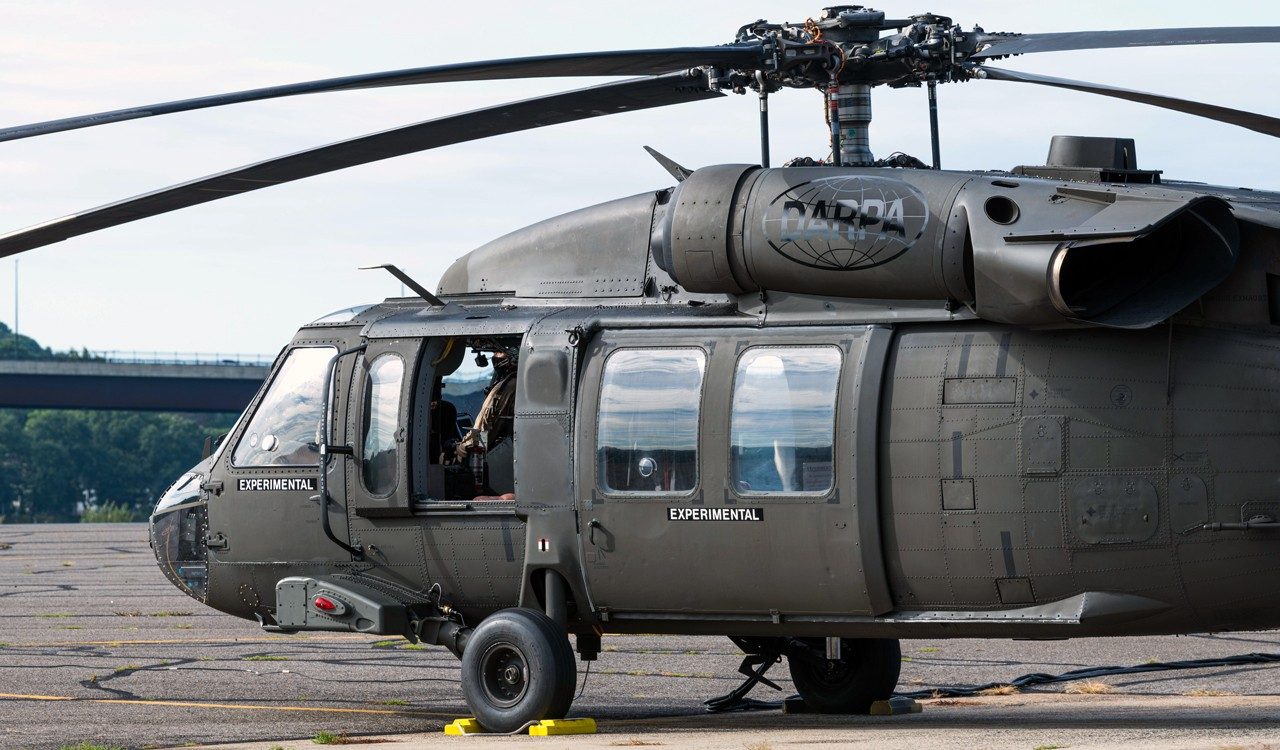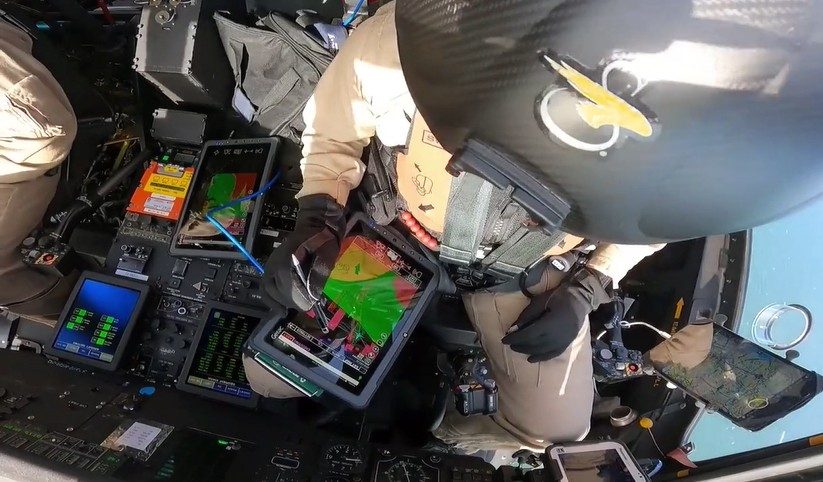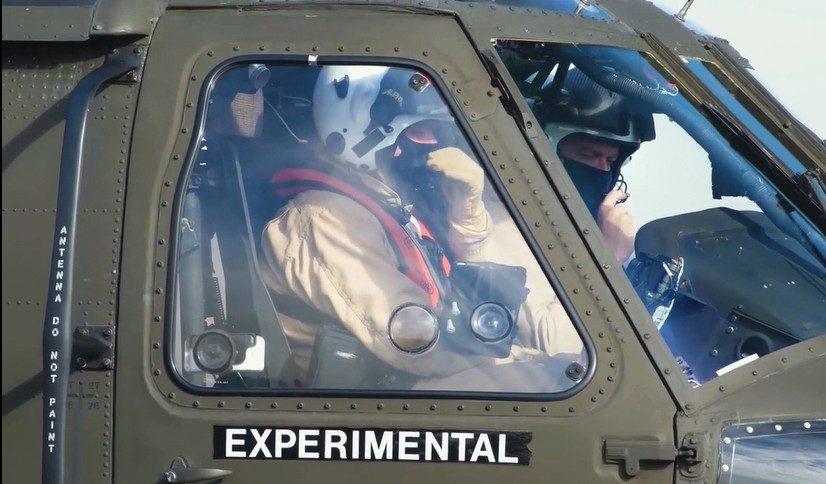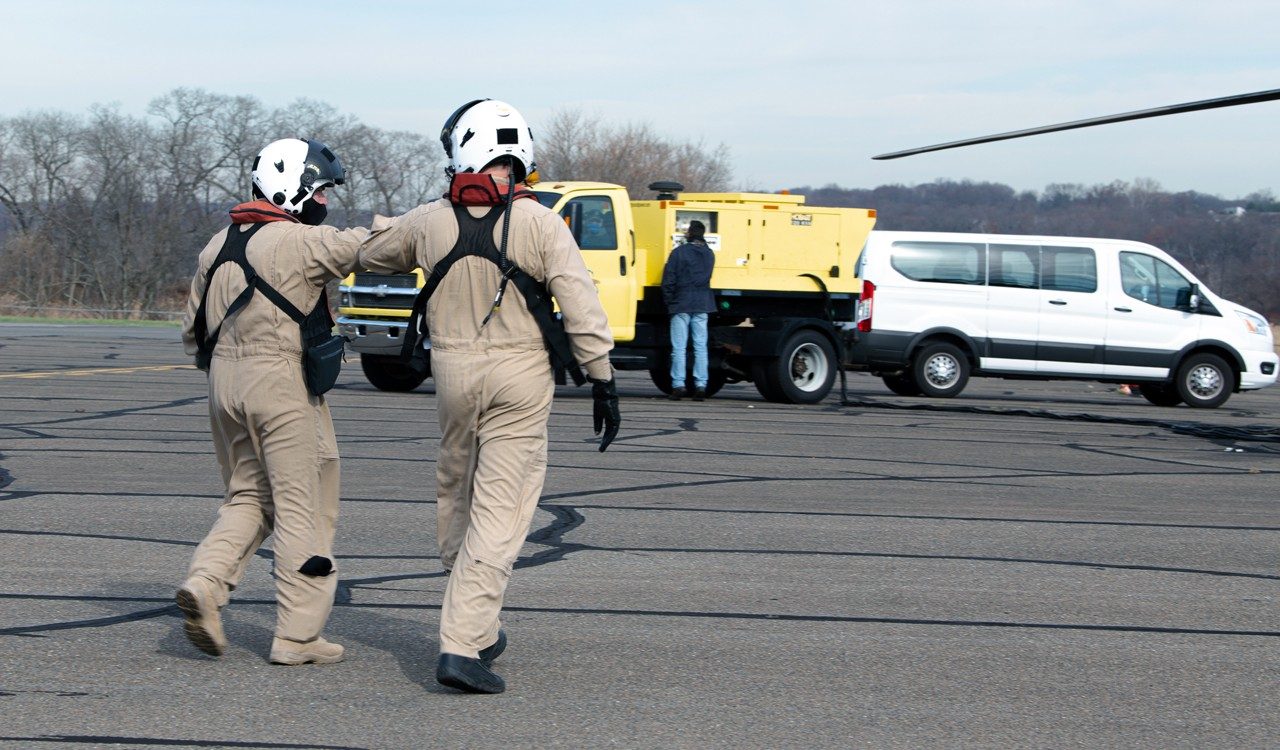Sikorsky and the U.S. Defense Advanced Research Projects Agency (DARPA) are working to dramatically improve flight safety and operations so humans and machines can work together more seamlessly in the field. Sikorsky is leading the way toward a future where aircraft can be operated with two, one or zero pilots at all times of the day or night and in a variety of complex scenarios, including contested, congested, degraded visual environments (DVE).
This technology suite already exists in Sikorsky’s S-70 Optionally Piloted Vehicle (OPV) Black Hawk and the Sikorsky Autonomy Research Aircraft (SARA), a modified S-76B helicopter. Developed under DARPA’s Aircrew Labor In-cockpit Automation System (ALIAS) and with the support of Sikorsky’s MATRIX™ Technology, pilots can focus on saving lives or transporting cargo instead of the mechanics required for contemporary flight.
In the Palm of Your Hand
“Through the ALIAS program and our unique combination of autonomy software and hardware, we are bringing our customers one step closer to safer and smarter flight,” said Igor Cherepinsky, director of Sikorsky Innovations. “Our end goal is to transition this technology to help address emerging mission requirements, including those outlined in the U.S. Army’s Future Vertical Lift (FVL) program.”
With ALIAS, there is the potential to transform how aviators and air crews execute their critical missions; operators can fly their aircraft safely, reliably, confidently, and affordably, even with reduced crew and limited visibility.

Obstacle Maneuvering a Breeze
From takeoff to landing, ALIAS and MATRIX left little work to be done by the pilots on board during the test. Accompanied by a safety pilot, our chief pilot Mark Ward commanded the supervised autonomous mission using only a tablet. As expected, the OPV Black Hawk turned and maneuvered its way through the simulated obstacles as they appeared on the tablet screen.
“Our approach to autonomy is both full-spectrum and human-centric,” Ward said. “As this demonstration showed, aerial vehicles equipped with MATRIX technology will be capable of operating autonomously from takeoff to landing, something we are capable of doing routinely now.”

Operator Decision Aiding for Safer Flights Today and Tomorrow
Managing highly sophisticated equipment while maintaining situational awareness across multiple domains – most of which you can’t see – is taxing. ALIAS and MATRIX will improve operator decision aiding for manned operations while also enabling both unmanned and reduced crew operations in increasingly complex future mission scenarios. This game-changing innovation has the power to transform how Army aviators and air crews execute their critical missions.
“We designed RAIDER X® and DEFIANT X™ to compete in highly complex, JADO environments. Our advancements in automation and autonomy will enable aircrews to focus on the mission, not just flying the aircraft,” said Jay Macklin, Business Development Director for Sikorsky Future Vertical Lift. “Our approach reduces pilot and crew workload by offloading certain mission tasks, enabling better situational awareness of the overall mission while providing extended operational capability and increased safety.”
RAIDER X® is Sikorsky’s offering for the U.S. Army’s Future Attack Reconnaissance Aircraft (FARA). DEFIANT X™ is the Sikorsky-Boeing team’s solution for the Army’s Future Long-Range Assault Aircraft (FLRAA).

Development and Testing Ongoing Through 2022





